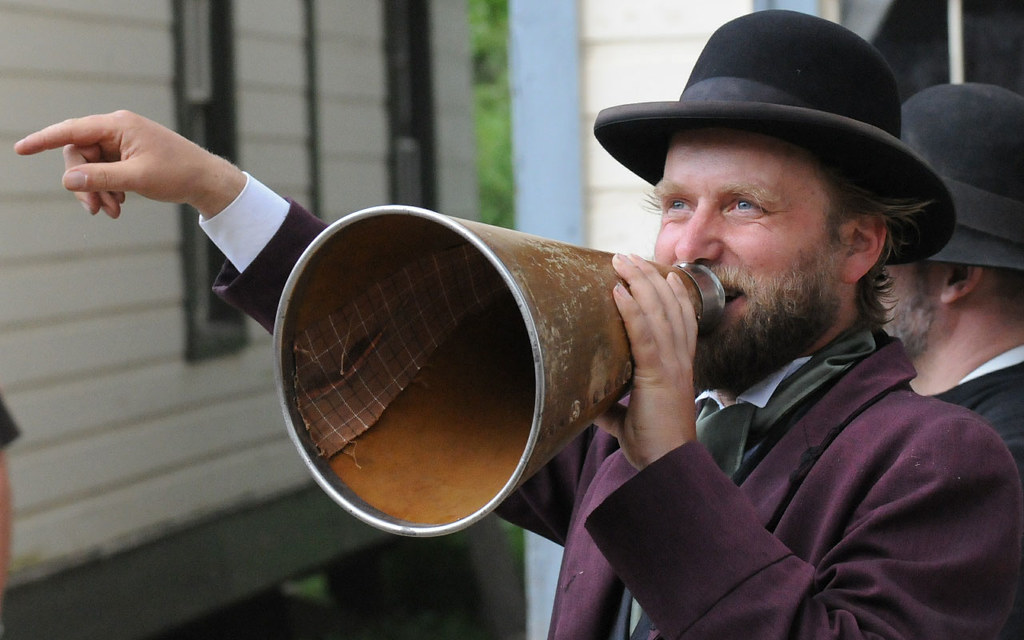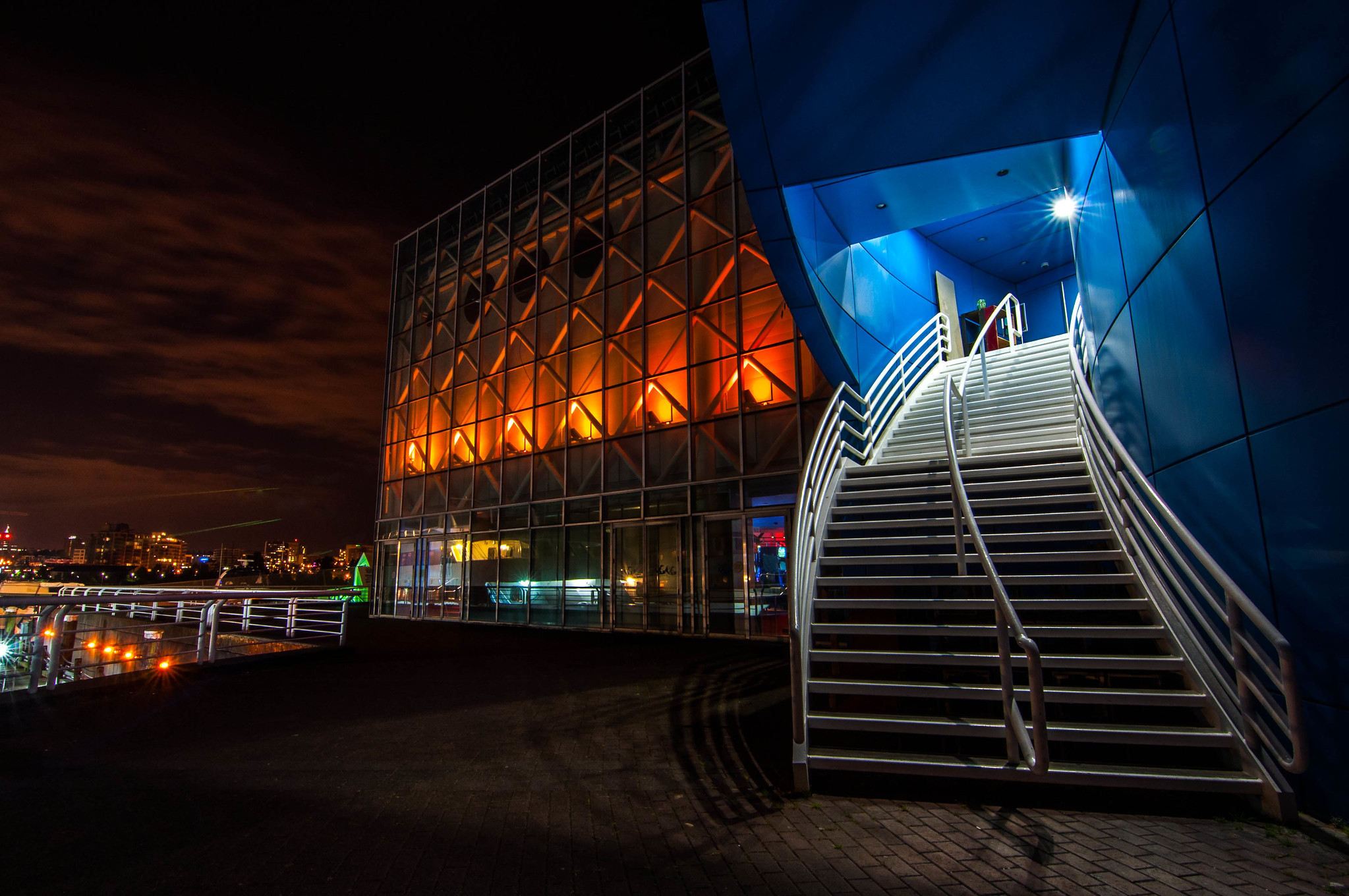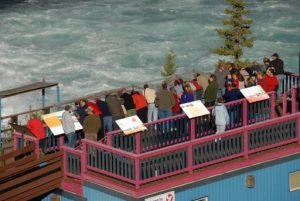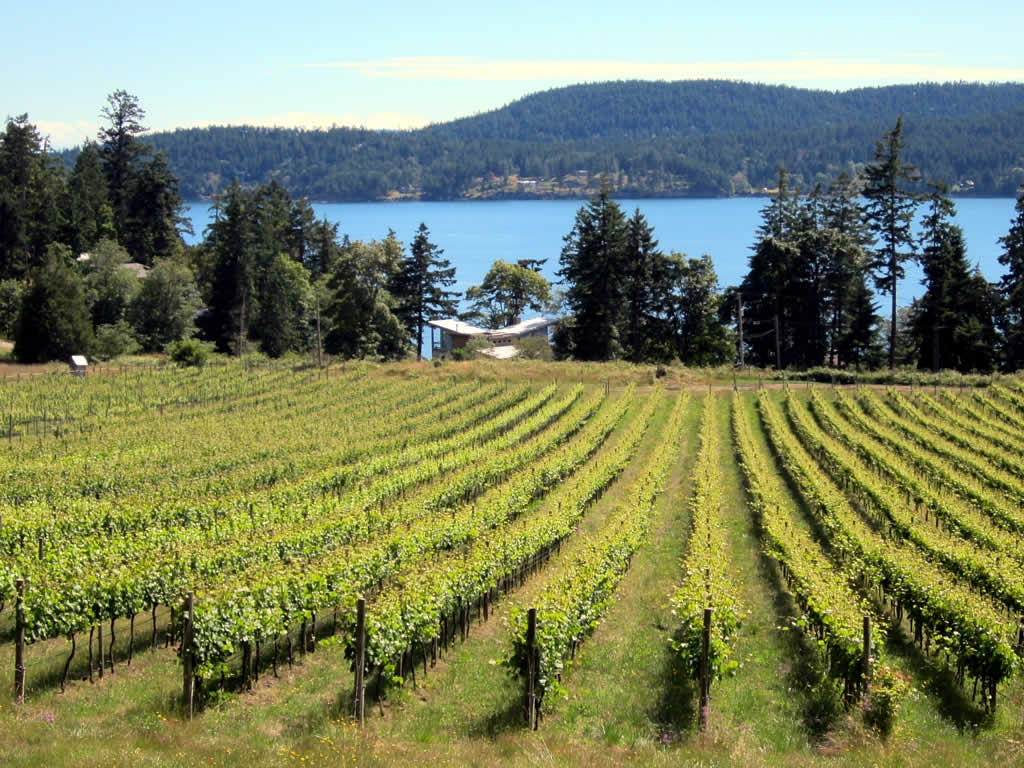31 6.3 Attractions
As a broad definition, tourist attractions are those places of culture, heritage, nature, or activities that draw people to visit. When the Canadian Tourism Commission, now Destination Canada, planned a survey of Canada’s tourist attractions in 1995, there was no official definition of tourist attractions. After consultation, federal, provincial, territorial, and industry stakeholders agreed on a working definition: “places whose main purpose is to allow public access for entertainment, interest, or education” (Canadian Tourism Commission, 1998, p. 3).
Five major categories were established:
- Heritage attractions: focus on preserving and exhibiting objects, sites, and natural wonders of historical, cultural, and educational value (e.g., museums, art galleries, historic sites, botanical gardens, zoos, nature parks, conservation areas)
- Amusement/entertainment attractions: maintain and provide access to amusement or entertainment facilities (e.g., arcades; amusement, theme, and water parks)
- Recreational attractions: maintain and provide access to outdoor or indoor facilities where people can participate in sports and recreational activities (e.g., golf courses, skiing facilities, marinas, bowling centres)
- Commercial attractions: retail operations dealing in gifts, handcrafted goods, and souvenirs that actively market to tourists (e.g., craft stores listed in a tourist guide)
- Industrial attractions: deal mainly in agriculture, forestry, and manufacturing products that actively market to tourists (e.g., wineries, fish hatcheries, factories)
The term “attraction” can convey a negative meaning. Something becoming a tourist attraction can imply a site that has been commercialized and, likely, negatively impacted by tourism. In addition, attraction typically denotes pleasure and fun, like an amusement park. The term becomes inappropriate, as does ‘entertainment’ when we speak of learning about other cultures and contested histories. For example, the Nikkei Internment Memorial Centre, in New Denver, BC is a National Historic Site of Canada, and tells the history of Japanese-Canadian internment during the Second World War. Another example may be an Indigenous art gallery, with many objects representing the spiritual beliefs and history of a people’s ancestors. Although both examples are technically sites of interest to tourists and therefore attractions, the mandate, approach, and design of the visitor experience varies from site to site.
To exist, these attractions often need to generate revenue to pay for site operations, to pay for staff, and to run educational programs. The sector involves a range of organizations, some privately owned, while others are government-funded, or non-profit. Revenue to culture- and nature-based sites has the added benefit of supporting their preservation as well as to build awareness and a deeper understanding in the public. In the case of Indigenous heritage sites, visitation can also lead to an opportunity for reconciliation. However, the cost of an attraction, such as a museum, gallery, or park, is typically only a fraction of the total travel cost.
The rest of this chapter explores various types of attractions in more detail.
Cultural/Heritage Tourism
The phrase cultural/heritage tourism can be interpreted in many ways. Destination Canada, formally the Canadian Tourism Commission has defined it as tourism occurring “when participation in a cultural or heritage activity is a significant factor for traveling. Cultural tourism includes performing arts (theatre, dance, and music), visual arts and crafts, festivals, museums and cultural centres, and historic sites and interpretive centres” (LinkBC, 2012). Food is also an integral part of the cultural tourism scene.

Take a Closer Look: The First Government of Canada Survey of Heritage Institutions
In 2018, the Department of Canadian Heritage released its Survey of Heritage Institutions, which provides aggregate financial and operating data to governments and cultural associations. It aims to gain a better understanding of not-for-profit heritage institutions in Canada in order to aid in the development of policies and the administration of programs. View the full version of the report at Government of Canada Survey of Heritage Institutions: 2017 [PDF].
A 2018 Government of Canada survey of heritage institutions found:
- Revenues for all non-profit heritage institutions in Canada exceeded $2.5 billion in 2015, a 23% increase over 2011. British Columbia was ranked fourth in earnings, at $225 million or 9% of the national total
- Three provinces — Ontario (43%), Quebec (25%), and Alberta (9%) — had the largest share of heritage institutions
- Museums generated the most revenue for the heritage sector, at $1.1 billion (44%) in 2015, followed by art galleries (22%), archives (15%), zoos and gardens (13%) and finally historic sites (6%). Accounting for various levels of government, they contributed an additional $1.3 billion in 2015
- Roughly 50% of heritage institutions charged admission, and the average adult entry fee was $9.91 in 2015
In 2015, the heritage sector employed over 36,300 people, an increase of 15% since 2011. Volunteers at heritage institutions outnumbered paid staff by approximately three to one, with approximately 115,650 volunteers. The amount of time they donated (over 6.6 million hours) contributed to huge savings for institutions. These statistics indicate that volunteerism is a critical success factor for Canadian heritage institutions.
Overall physical attendance at heritage institutions totalled over 75 million visits in 2015, an increase of 34% from 2011. In addition, as museums and galleries digitize their holding for online access, heritage experienced some 200 million virtual visitors.
Performing Arts
Performing arts generally include theatre companies and dinner theatres, dance companies, musical groups, and artists and other performing arts companies. These activities and entities contribute to a destination’s tourist product offering and are usually considered an aspect of cultural tourism.
British Columbia has 4.7% of the total number of cultural workers in Canada, the second highest concentration, of which performing arts represents some 55% (Hill Strategies, 2019, p.1). Across Canada, there are 726,600 cultural workers.
Spotlight On: Made in BC
Made in BC: Dance On Tour is a not-for-profit organization committed to bringing touring dance performances, dance workshops, and other dance events to communities around British Columbia for the benefit of residents and visitors alike. Originally intended to showcase BC performers, it also brings touring groups from other regions to the province. For more information, visit the Made in BC website.
Art Museums and Galleries
Art museums and galleries may be public, private, or commercial. Both art museums and public galleries present works of art to the public, exhibiting a diverse range of art from more well-known artists to emerging artists. Exhibitions are assembled and organized by a curator who oversees the installation of the works in the gallery space. However, art museums and public galleries have different mandates, and therefore offer different visitor experiences.
Art museums collect historical and modern works of art for educational purposes and to preserve them for future generations. Public galleries, on the other hand, do not generally collect or conserve works of art. Rather, they focus on exhibitions of contemporary works as well as on programs of lectures, publications, and other events.
A few examples of the art museums and public galleries in BC are the Vancouver Art Gallery, the Art Gallery of Greater Victoria, Two Rivers Gallery in Prince George, and the Kelowna Art Gallery.
Spotlight On: The Yukon Arts Centre
The Yukon Arts Centre is a public gallery located in Whitehorse that supports diversity and inclusion through a wide range of art from across the Yukon Territory. They aim to enrich personal relationships between First Nations artwork and all types of visitors and are committed to learning from their history, experiences, perspectives, and needs. They also offer various programming that includes live events, artist and curator residencies, as well as workshops for all ages.
Many of the smaller galleries have formed partnerships within geographic regions to share marketing resources and increase visitor appeal. One example includes the self-guided Art Route Tour in Haida Gwaii.
Museums
The term museum covers a wide range of institutions from wax museums to sports halls of fame. No matter what type of museum it is, many are now asking if museums are still relevant in today’s high-tech world. In response, museums are using new technology to expand the visitor experience. One example is the Royal BC Museum, which hosts an online Learning Portal, lists recent related tweets on its home page, and is home to an IMAX theatre playing IMAX movies that relate to the museum exhibits.
Spotlight On: Canadian Museums Association
The Canadian Museums Association (CMA) is the national organization for the advancement of Canada’s museum community. The CMA works for the recognition, growth, and stability of the sector. Canada’s 2,500 museums and related institutions preserve Canada’s collective memory, shape national identity, and promote tolerance and understanding. For more information, visit the Canadian Museums Association website.
Data from the 2011 Survey of Heritage Institutions in Canada found that attendance at heritage institutions totalled over 75 million visits in 2015, up 34% since 2011. Of that number, there were 14.1 million to art galleries, 15.4 million to heritage sites and another 31 million visits to museums being the most popular (Government of Canada, 2017).
Spotlight On: British Columbia Museums Association
Founded in 1957 and incorporated in 1966, the British Columbia Museums Association (BCMA) provides a unified voice for the institutions, trustees, professional staff, and volunteers of the BC museum and gallery community. For more information, visit the British Columbia Museums Association website.
British Columbia is home to over 200 museums, including Vancouver’s Museum of Anthropology and Victoria’s Royal BC Museum, both with impressive displays of Indigenous art and culture. Smaller community museums include the Fraser River Discovery Centre in New Westminster, and the Zeballos Heritage Museum.
Botanical Gardens
A botanical garden is a garden that displays native and non-native plants and trees. It conducts educational, research, and public information programs that enhance public understanding and appreciation of plants, trees, and gardening (Canadensis, 2014).
Canadian botanical gardens host an estimated 4.5 million visitors per year and are important science and educational facilities, providing leadership in plant conservation and public education (Botanic Gardens Conservation International, 2014). British Columbia is home to notable botanical gardens such as Vancouver’s Stanley Park, The Butchart Gardens near Victoria, UBC’s Botanical Garden, and VanDusen Botanical Garden, to name just a few.
Zoos
Zoos all over the world are facing many challenges. An article The Atlantic entitled “Is the Future of Zoos No Zoos at All?” discusses how the increased use of technology by biologists, such as habitat cameras (nest cams, bear den cams), GPS trackers, and live web feeds of natural behaviours, has transformed the zoo experience into “reality zoo TV” (Wald, 2014). There is also growing opposition to zoos from organizations such as PETA, who claim that zoo enclosures deprive animals of the opportunity to meet their basic needs and develop relationships (PETA, 2014).
Spotlight On: Canada’s Accredited Zoos and Aquariums
Canada’s Accredited Zoos and Aquariums (CAZA) was founded in 1975. It represents the 33 leading zoological parks and aquariums in Canada and promotes the welfare of, and encourages the advancement and improvement of, related animal exhibits in Canada as humane agencies of recreation, education, conservation, and science. For more information, visit the Canada’s Accredited Zoos and Aquariums website.
Canada’s Accredited Zoos and Aquariums (CAZA) work in support of ethical and responsible facilities. Examples of CAZA members in BC include the BC Wildlife Park in Kamloops, the Greater Vancouver Zoo, and the Vancouver Aquarium (Canada’s Accredited Zoos and Aquariums, 2014).
Canadian zoos with high attendance levels include the Toronto Zoo with over 1.3 million guests in 2010 (Toronto Zoo, 2010), and the Vancouver Aquarium with over 1 million visitors in 2013 (Vancouver Aquarium 2013). In 2013, the Calgary Zoo employed almost 300 full- and part-time staff and an additional 99 seasonal employees (Calgary Zoo, 2013).
Spotlight On: The Yukon Wildlife Preserve
The Yukon Wildlife Preserve was created to allow visitors to explore the Yukon’s natural landscape while also acting as a safe space for Yukon animal species. The preserve takes in and rehabilitates abandoned or injured animals to give them a second chance at survival, while also educating visitors and fostering a deeper appreciation for Yukon land and animals.
Amusement and Theme Parks

While cultural and heritage attractions strive to present information based on historic and evolving cultures and facts, amusement parks are attractions that often work to create alternate, fanciful realities. Theme parks have a long history dating back to the 1500s in Europe, and have evolved ever since. Today, it is hard not to try to compare any amusement park destination to Disneyland and Disney World. Opened in 1955 in sunny California, Disneyland set the standard for theme parks. The Pacific National Exhibition (PNE) in Vancouver is considered one of BC’s most recognizable amusement parks and recently celebrated its 100-year anniversary (PNE, 2015).
Canada’s ability to compete with US theme parks is hampered by our climate. With a much shorter summer season, the ability to attract investment in order to sustain large-scale entertainment complexes is limited, as is the market for these attractions. It’s no wonder that in 2011 profitable Canadian amusement parks only saw an average net profit of $73,200, with 34% of firms failing to turn a profit that year. BC has only 22 amusement parks, and more than half of these are considered small, with under 100 employees (Government of Canada, 2014d).
Spotlight On: International Association of Amusement Parks and Attractions
The International Association of Amusement Parks and Attractions (IAAPA) is the largest international trade association for permanently situated amusement facilities worldwide. Dedicated to the preservation and prosperity of the amusement industry, it represents more than 4,300 facility, supplier, and individual members from more than 97 countries, including most amusement parks and attractions in the United States. For more information, visit the International Association of Amusement Parks and Attractions website.
Motion Picture and Video Exhibitions
The film industry in Canada, and particularly in BC, has gained international recognition in part through events such as the Toronto International Film Festival, Montreal World Film Festival, and Vancouver International Film Festival. According to the Motion Picture Association — Canada (2013) these festivals attracted an estimated audience of 1.9 million in 2011, as well as over 18,000 industry delegates. Festival operations, visitor spending, and delegate spending combined totalled $163 million that year and generated 2,000 jobs (full-time equivalents).
There are no statistics available on film-induced tourism in Canada, but several notable feature films and television series have been shot here and have drawn loyal fans to production locations. In BC, some of these titles include Reindeer Games and Double Jeopardy (Prince George), Roxanne (Nelson), The Pledge (Fraser Canyon), Battlestar Galactica (Kamloops), The Twilight Saga, Smallville, and Supernatural (Greater Vancouver).
Spotlight On: The Whistler Film Festival
Founded in 2001, the Whistler Film Festival has grown to become one of Canada’s premier events for promoting the development of Western Canada’s film industry and an emerging venue in the international circuit. The festival, held during the first weekend in December, attracts an audience of over 8,200 and more than 500 industry delegates to the ski resort of Whistler, British Columbia, for seminars, special events, and the screening of over 80 independent films from Canada and around the world. For more information, visit the Whistler Film Festival website.
Spectator Sports and Sport Tourism
Spectator sports and the growing field of sport tourism also contribute significantly to the economy and have become a major part of the tourism industry. According to the Canadian Sport Tourism Alliance (2013), sport tourism is any activity in which people are attracted to a particular location to attend a sport-related event as either a:
- Participant
- Spectator
- Visitor to sport attractions or delegate of sports sector meetings
In 2012, the sport tourism industry in Canada surpassed $5 billion in spending. The domestic market is the largest source of sport tourists, accounting for 84% of all spending, followed by overseas markets (10.8%) and US visitors (5.3% of sport tourism revenues) (Canadian Sport Tourism Alliance, 2014).
Spotlight On: Canadian Sport Tourism Alliance
The Canadian Sport Tourism Alliance (CSTA) was created in 2000 to market Canada internationally as a preferred sport tourism destination and grow the sport tourism industry in Canada. The purpose of the alliance was to increase Canadian capacity to attract and host sport tourism events. The alliance has over 400 members including 142 municipalities, 200+ national and provincial sport organizations, and a variety of product and service suppliers to the industry. For more information, visit the Canadian Sport Tourism Alliance website.
In British Columbia, sport tourism is supported through the Ministry of Community, Sport and Cultural Development, which invests in event hosting and the ViaSport program (formerly known as Hosting BC). Building on the success of the 2010 Olympic and Paralympic Winter Games, the program has a goal to maintain BC’s profile and reputation as an exceptional major event host. One success story is Kamloops, dubbed the Tournament Capital of Canada, which has made sport tourism a central component of its economy and welcomes over one million visitors to its tournament centre facility each year. And since 1977, the BC Winter and Summer Games have moved around the province, drawing attendees and creating volunteer opportunities for up to 3,200 community members.
Take a Closer Look: The Sport Tourism Guide
The Sport Tourism Guide from Destination BC’s Tourism Business Essentials series covers topics including understanding sport tourism, industry trends, event bidding and hosting, balance sheets, economic impacts, case studies, best practices, and links to additional information. For more information, read the Sport Tourism Guide [PDF].
Spotlight On: Montana Mountain
Montana Mountain, located next to the Yukon community of Carcross is home to more than 40 kilometres of hand-built and restored single track mountain-biking trails which have been recognized as world-class. This recognition has begun to attract many visitors from all over the world who are into high-end biking experiences.
Gaming
According to the Canadian Gaming Association, gaming is one of the largest entertainment industries in Canada. It has larger revenues than those generated by magazines and book sales, drinking establishments, spectator sports, movie theatres, and performing arts combined (Canadian Gaming Association, 2011).

In 2017, the association released an national economic benefits report stating that the industry produced a total of $17.1 billion in annual revenue and reinforced that gaming is an important employer in addition to providing significant economic returns to Canadians (Canadian Gaming Association, 2017).
The British Columbia Lottery Corporation (BCLC) is a Crown Corporation that manages socially responsible gaming in BC. According to the BC Lottery Corporation in 2019, the BCLC, via multiple betting channels and distribution channels, provided:
- 17 casino facilities
- two main horse racetracks
- approximately 3,528 lottery outlets (retailers)
- 3 bingo halls including 18 community gaming centres (or CGCs)
Gaming at these facilities and online generated $1.4 billion in net tax revenue to the province of BC, which was reinvested into the heath care system and distributed to communities through a series of grants (BC Lottery Corporation, 2019).
Spotlight on: The BC Lottery Corporation (BCLC)
The BC Lottery Corporation (BCLC) is a provincial Crown corporation that operates under the provincial Gaming Control Act. It is responsible for operating lottery, casino, online, and bingo gaming in BC. For more information, visit the BC Lottery Corporation website.
The gaming industry is growing and the BCLC monitors the marketplace, noting that consumer behaviour and expectations are shifting. Advances in technologies allow consumers to enjoy more digital gaming experiences while those looking for more social interaction can enjoy land based casino gambling with enhanced amenities such as expanded food and beverage options. (BC Lottery Corporation, 2019).
Agritourism, Culinary Tourism, and Wine Tourism
Let’s now have a closer look at the world of farms, food and wine in the entertainment and tourism industries.
Agritourism
The Canadian Farm Business Management Council defines agritourism as “travel that combines rural settings with products of agricultural operations within a tourism experience that is paid for by visitors” (SOTC, 2011). In other words, rural and natural environments are mixed with agricultural and tourism products and services.
Agritourism products and services can be categorized into three themes:
- Fixed attractions such as historic farms, living farms, museums, food processing facilities, and natural areas
- Events based on an agricultural theme such as conferences, rodeos, agricultural fairs, and food festivals
- Services such as accommodations (B&Bs), tours, retailing (farm produce and products), and activities (fishing, hiking, etc.) that incorporate agricultural products and/or experiences
The local food movement is growing in popularity; agritourism presents a great opportunity to use farm resources to create experiences for visitors, whether they be for entertainment, education, or as venues for business/meeting events. In BC, examples of agritourism businesses include Salt Spring Island Cheese, and the Okanagan Lavender and Herb Farm near Kelowna (HelloBC, 2014).
The three primary agricultural regions in BC are:
- The Fraser Valley (outside of Vancouver)
- The Cowichan Valley (on Vancouver Island)
- The Okanagan Valley (in the southern central part of BC)
A number of self-guided circle tours and other experiences are available in these and other areas, including annual festivals and events. Some examples of farm tours can be viewed at the BC Agriculture in the Classroom Foundation.
Spotlight On: Whitehorse Rapids Fish Hatchery
In 1956, a hydroelectric power station was constructed on the Yukon River near Whitehorse. The river acts as a highway for the annual chinook salmon spawn. To help protect these fish, a fish ladder was built to allow access to spawning grounds further upstream. In 1984, the Whitehorse Rapids Fish Hatchery was built at this site to compensate for any lost salmon fry unable to make it past the dam. Yukon First Nations have a long, robust history with the spawning Yukon River salmon, and the fish still act as a good food source. Today, the territorial and federal governments rely on traditional teachings from Indigenous elders to direct decisions about the fish population.

Culinary Tourism
Culinary tourism refers to “any tourism experience in which one learns about, appreciates, and/or consumes food and drink that reflects the local, regional, or national cuisine, heritage, culture, tradition, or culinary techniques” (Ontario Culinary Tourism Alliance, 2013). The United Nations World Tourism Organization has noted that food tourism is a dynamic and growing segment, and that over one-third of tourism expenditures relate to food (UNWTO, 2012).
Culinary tourism in Canada began to gain traction as a niche in 2002 when Destination Canada, formerly the Canadian Tourism Commission, highlighted it within the cultural tourism market. According to a Ryerson University study, the average culinary tourist spends twice the amount of a generic tourist (Grishkewich, 2012).
For examples of farm fresh meals, artisan drinks etc. visit the Hello BC visitor web page Food, Drink and Wellness. Organizations such as the UNWTO see food-making and wine-making as a key part of maintaining and preserving cultural traditions in addition to promoting local economic development. Culinary (or sometimes referred to as gastronomy) tourism and wine tourism are closely related and often promoted together. Wine tourism will be explored next.
Wine Tourism
The North American Industrial Classification System (NAICS) defines wine tourism as the “tasting, consumption, or purchase of wine, often at or near the source, such as wineries.” It also includes an educational aspect and festivals focusing on the production of wine (Agriculture and Agri-food Canada, 2014).
According to the 2015 Wine Tourism in Canada report [PDF], Canada welcomes over 3 million visitors annually to 550 Canadian wineries with an annual annual economic impact worth 6.8 billion. Nationally three key grape regions exist: British Columbia, Ontario and Nova Scotia with the majority of production in Ontario and British Columbia (Canadian Vintners Association/Tourism Industry of Canada, 2015).
Similar to France’s AOC and Italy’s DOC wine production quality controls, BC and Ontario use VQA (Vintners Quality Alliance) to assure quality and knowledge the wine is grown and produced.

The BC wine industry has grown significantly since the 90’s when only around 17 wineries were in existence. Today, there are more than 280 wineries in BC, ranging from small family-run vineyards to large estate operations. According to the British Columbia Wine Institute’s quick facts, BC’s wine industry generated $2.8 billion in 2019 to the provincial economy and welcomes over a million visitors annually (British Columbia Wine Institute, 2020).
Canada makes great wine, which is a surprise to many international visitors. Many think of Canada as cold and snowy and just too cool to produce great wine. However, BC’s combination of extreme heat during the warmer months and cooler winters creates intense, fruit forward quality wines. BC wines receive many prestigious international wine awards (British Columbia Wine Industry, 2019).
Take a Closer Look: Wine & Food Tourism Strategy 2016-2019
For more information on the wine and food sectors in British Columbia, read this 2016 report that speaks to the wine and food tourist, industry key insights and other important information: British Columbia Wine Institute Wine and Food Tourism Strategy 2016–2019 [PDF] found on the Wines of British Columbia website.
Industry experts agree that agritourism, culinary tourism, and wine tourism will continue to attract lucrative visitors and play a growing role in BC’s tourism economy.
A places of interest that pulls visitors to a destination, open to the public for entertainment or education.
A garden that displays native and/or non-native plants and trees, often running educational programming.
When tourists travel to a specific destination in order to participate in a cultural or heritage-related event.
Museums that collect historical and modern works of art for the educational purposes and to preserve them for future generations.
An art gallery that does not generally collect or conserve works of art. Rather, it focuses on exhibitions of contemporary works, as well as programs of lectures, publications, and other events.
Any activity in which people are attracted to a particular location as a participant, spectator, or visitor to sport attractions, or as an attendee of sport-related business meetings.
The crown corporation responsible for operating casinos, lotteries, bingo halls, and online gaming in the province of BC.
Small-scale gaming establishments, typically in the form of bingo halls.
Tourism experiences that highlight rural destinations and prominently feature agricultural operations
Tourism experiences where the key focus is local and regional food and drink, often highlighting the heritage of products involved and techniques associated with their production.
Tourism experiences where exploration, consumption, and purchase of wine are key components.

